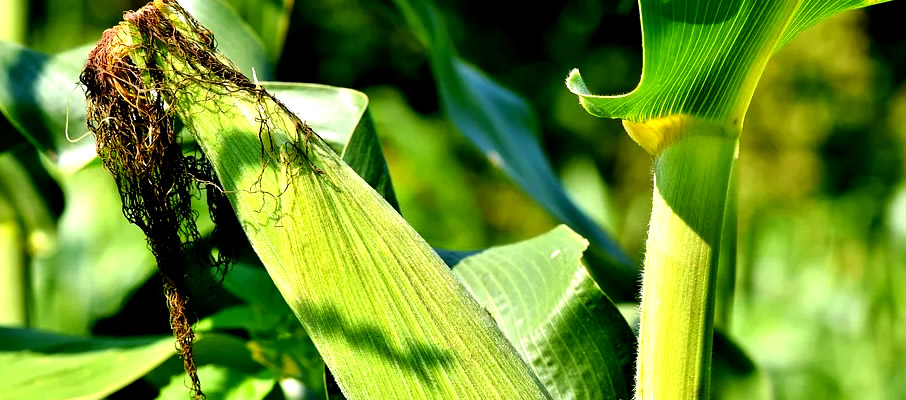
Maize (Zea mays)
Local names in Kenya (Mahindi, Oduma, Bando, Madumwa)
Overview
Maize is the most important cereal crop in Kenya. It is the staple food for most rural population. It is used as a human food, animal feed, production of beverages and also making of bio-fuel. Maize is a versatile crop with a wide genetic base and a large number of varieties growing across a range of agro-ecological zones (AEZ) and soil types and having differing maturity periods. However, maize grows best on well-drained, well-aerated, deep soils containing adequate organic matter and well supplied with requisite nutrients. Maize will produce 2 metric tons per hectare under good management
Altitude range
Maize require an altitude of 0-2200 masl Highlands; Midlands; Lowlands depending on variety.
Soil type and conditions
It requires deep, well drained, fertile alluvial or loam soils with good water holding capacity and high organic matter
The pH should be 5.5-7.5. Maize nutrient requirements include; N, P, K, Mg, Ca, S, Fe, Zn, Mn, B, Cu, Mo, Cl.
Temperature range
The optimal temperatures should be 25-30 oC
Rainfall
Maize require rainfall of 400 – 1200 mm p.a
Steps during land preparation
- Consider minimum tillage to reduce cost and to conserve soil, water and nutrients and to reduce workload
- Slash and plant using appropriate tools e.g. rippers, jab planters, dibbler, oxen drawn equipment e.g. the ripper, tractor drawn no till planter
- Ploughing of the soil should be done using chisel ploughs to avoid fine tilths. Hoes and oxen drawn implements can also be used
- Contour farming technique recommended
- Add manure and fertilizers to the soil in the right amounts to provide the required plant nutrients for vigorous crop growth


Common planting materials
Seeds
- Select seed grains situated at the middle of the cob and discard grains at the base and the tip of the cob
- Seeds should be obtained from reliable sources
- Farmer saved seeds are alternatives where certified seeds aren’t available or the seed can be bought from the market
Recommended varieties
Select seeds that are adapted to the agroecological zones and soil types, High Altitude, Medium altitude, Low altitude, special trait varieties e.g. Striga tolerant varieties and Open Pollinated Varieties (OPVs)
- Plant at the onset of rains e.g. 4 continuous days of sufficient rain – to take advantage of nitrogen flush
- Plant along the contours or across the slope
- Conduct germination test before planting
- Plant when the soil is moist and plant certified maize varieties tolerant to striga weed IR- Coated Maize Varieties e.g. Ua Kayongo
- Maize pure stand: 75cm x 25 or 30cm, 1 seed per hole, 5 cm deep and 2.5-5 cm for moist planting
- Fill gaps one to two weeks after planting when plants have emerged
Maize is rain and irrigated if necessary, by adopting more efficient micro-irrigation methods such as drip Irrigating the fields early in the morning, late in the evening or at night but never during full sunshine
Maize;
1st topdressing is applied when the maize crop is knee high at 30-45 cm high
2nd topdressing is applied when maize crop is almost tussling and usually when there is enough moisture in the soil
- Maintain soil health for good production and income
- Test soils first to guide application of manure and fertilizer
- Practice conservation farming approaches, minimum soil disturbance, permanent soil cover, crop rotation and soil conservation measures
- Thinning, remove weak plants under moist soil conditions 14 days after emergence
- Apply IPM principles for increased use of biophysical methods and reduced use of agrochemical methods
- Intercrop maize with desmodium fodder (Desmodium uncinatum) push-pull technology to trigger suicidal germination of Striga
Pests include; Fall Armyworm (Spodoptera frugiperda), Armyworm (Spodoptera exempta), Maize stalk borer (Busseola fusca), Termites, Cutworms, Leaf miner, Moths, Beetles, Thrips, Grasshopper, Rodents (rats and mice), Weevils (Sytophylus zeameis) and Larger grain borer (Prostephanus truncatus).



Fall Armyworm
Armyworm

Maize stalk borer

Termites


Leaf miner
Rodents


Weevils


Larger grain borer
Pest control strategy Field sanitation and store hygiene
- Plant and harvest early
- Rogueing
- Crop rotation
- Push-pull technology and use of natural enemies.
- Rat traps
- Use of appropriate insecticides as recommended by experts


Diseases include; Head smut (Sphacelotheca reiliana), Smut (Ustilago maydis), Maize lethal necrosis disease (MLND), Maize streak virus; Northern leaf blight, Common rust, Grey leaf spot

Head smut
Smut



Maize Lethal Necrosis Disease (MLND)


Maize streak virus


Northern leaf blight


Common rust


Grey leaf spot
Control of diseases
- Use of certified clean seed resistant or tolerant varieties
- Crop rotation
- Field hygiene
- Vector control e.g. aphids
- Use of appropriate fungicides as recommended by experts
Maize is mature 4 to 9 months after planting depending on the variety and altitude
- Harvesting is done when the crop reaches harvest maturity 10 to 15 days after physiological maturity
- Harvesting is done by cutting and stalking to enhance drying, make it easy to harvest and to prevent pathogen infestation
- Harvest by de-husking.
- Transport maize from the field to the place of shelling using clean transport equipment
- Dry before shelling
- Winnow to remove dust and chaff Control weevils and grain borers by drying the maize to 13-14% moisture content to avoid grain attack by fungal infections such as aflatoxin
- Accessible methods of determining or estimating moisture content can be used
- If insecticides are used to preserve maize, store it in sisal or jute bags on raised pallets to protect from rodents and chaff
Sort to remove damaged, discolored and infected grains, store in airtight bags or metallic silos to minimize use of pesticides
